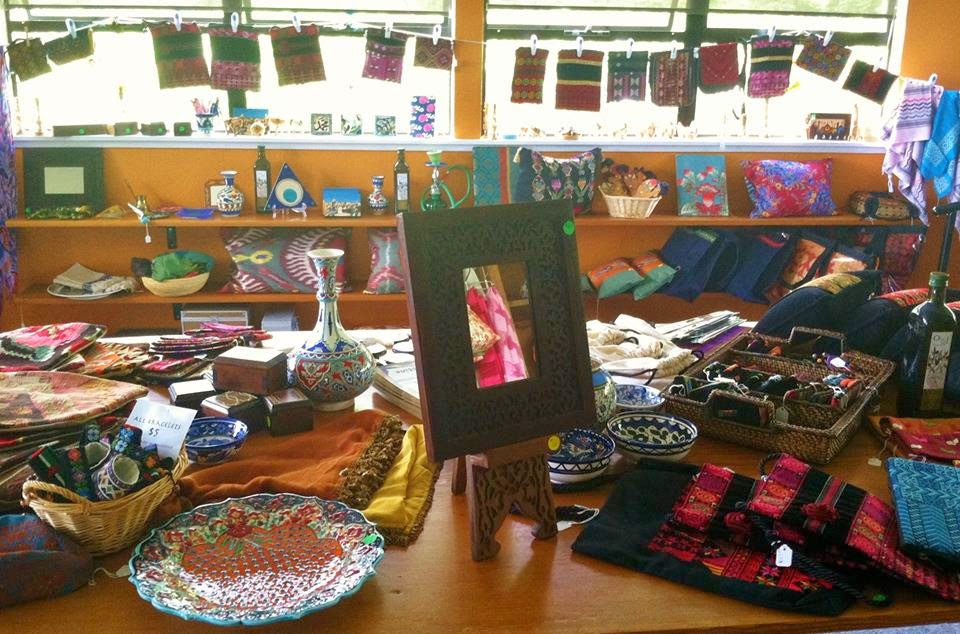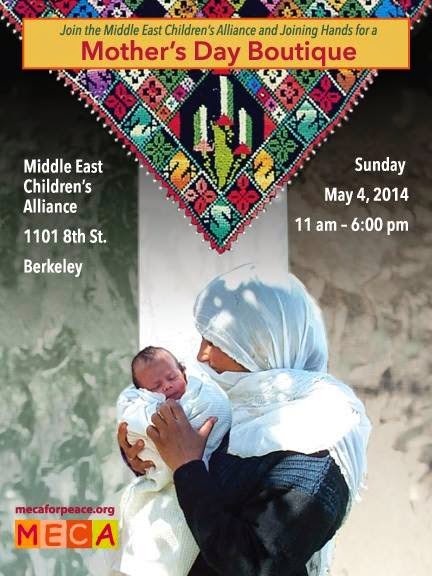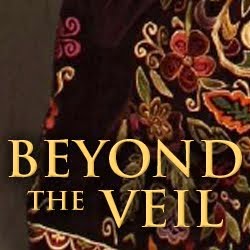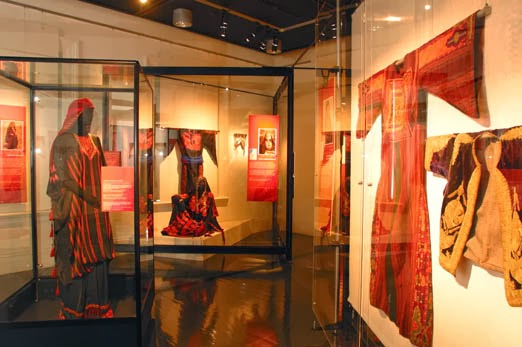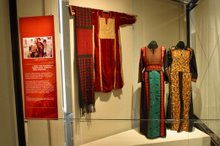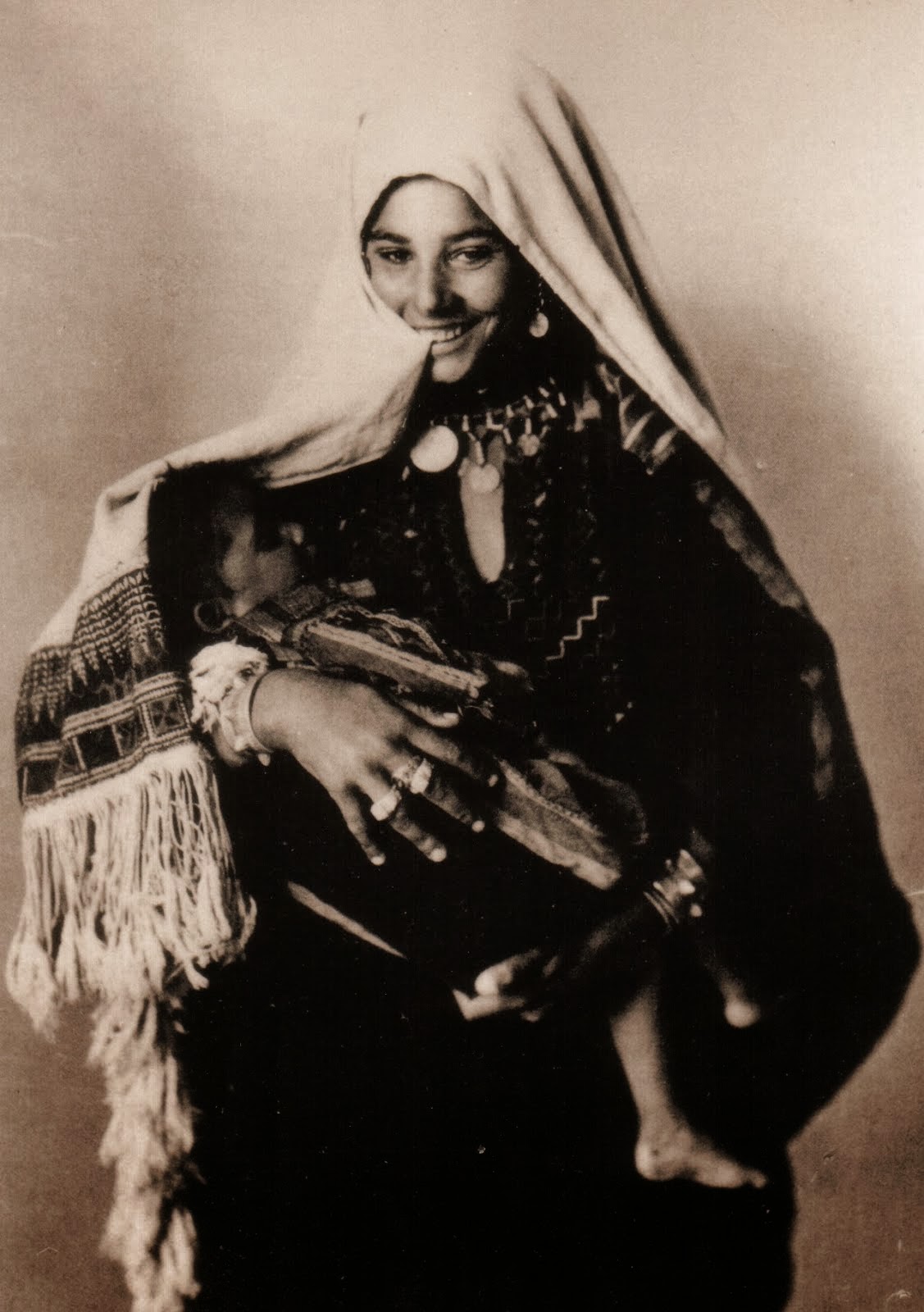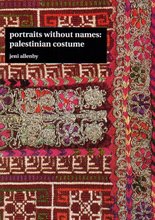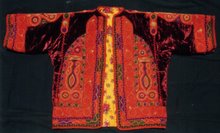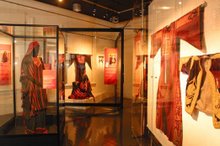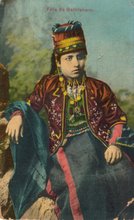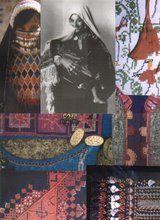 |
| Enaya Othman holds one of the handmade items featured in “Beyond the Veil”Michael Sears source |
A very interesting exhibition is currently on display at the Milwaukee Public Museum, which shares curatorial goals with our museum's own traveling exhibitions "Portraits without names: Palestinian costume" ("featuring 200 years of Palestinian design and examining how traditional costume and embroidery has long reflected the culture and identity of the Palestinian people", which is curated to include garments and stories of the nearest Palestinian diaspora community to wherever it being displayed) and "Secret Splendours: women's costume in the Arab world" ("curated to examine and redress Western misconceptions regarding Arab and Muslim life, and featuring urban, tribal, village and oases traditional costumes from Morocco to Yemen").
"Beyond the Veil: Dress, Identity, and Tradition through the Eyes of the Muslim and Arab Women of Greater Milwaukee":
"is a special exhibition created as a joint project between MPM and the Arab and Muslim Women's Research and Resource Institute (AMWRRI), showcasing the dress of Muslim women from the Milwaukee area and exploring some enduring traditions in Muslim clothing. This exhibit aims to expand public knowledge concerning the significance of cultural clothing beyond stereotypes, and to give women from the Milwaukee community an opportunity to speak about their experiences both here, and in the diverse societies of their ethnic descent.
"This exhibit, supported by a grant from the Wisconsin Humanities Council, features 30 traditional outfits, as well as various special occasion and day-to-day use items like table sets and jewelry, owned by local women with strong ethnic ties to countries ranging from Jordan, Palestine, and Kuwait, to Morocco, India, and Pakistan.
"Beyond the Veil caps a four-year-long project led by AMWRRI dedicated to the study of the attitudes toward cultural clothing among the Muslim and Arab women of the Milwaukee area. Testimonies gathered here highlight the importance of cultural clothing and its meanings to Arab and Muslim women who migrated from various Muslim countries, and illustrate how women from different generations continue to recreate and adapt elements of their cultural dress to meet modern tastes."Annysa Johnson published the following article "Milwaukee Public Museum show explores relationship between Muslim clothing, identity" in the Journal Sentinel on May 25, 2014:
"In December, on the eve of her niece's wedding, Enaya Othman gathered with the women of her family for the traditional painting of the henna on the bride and her attendants.
"Like the others, Othman donned a traditional gown, a colorful Roomi thob of her native Palestinian territories. But this was not just any dress. Handmade in her homeland, it was fashioned from pieces of a linen garment worn by her late mother. The cross-stitching of its silk embroidery tells the tale of its origins in her family's home region of Ramallah al-Bireh.
"Othman's thob is now on display at the Milwaukee Public Museum as part of a dazzling new exhibit that exploresthe complex and evolving relationship between traditional dress and identity for Muslim women whose families immigrated to Wisconsin from around the world. "This dress is connected to my heart, my traditions, my mother's traditions," said Othman, an assistant visiting professor of Arabic language, culture and history at Marquette University and the driving force behind the exhibit, "Beyond the Veil." "It tells my mother's story, and I will one day hand it to my daughter, so she can tell her story."
"Beyond the Veil," which opened to the public this month, grew out of an oral history project launched in 2010 by the nonprofit Arab and Muslim Women's Research and Resource Institute co-founded by Othman through her work at Marquette.
"That project transcribed the narratives of dozens of Arab men and women, both Muslim and Christian, whose families have settled here over the past century. Recurring themes, especially among the Muslim women, centered on appearance and identity and how the clothes they wore opened them to stereotyping and discrimination and affected their adjustment to life in the United States, according to Othman.
"What researchers found were varied and complex relationships to traditional dress: women who wore it exclusively, and others just for special occasions. There were women who embraced it, yet fought against being stereotyped by it; and younger women who were rediscovering and modernizing it. Depending on the woman, the clothes reflect a sense of modesty or pride; a connection to history, to faith, culture or regional identity.
Visitors milled through the exhibit at its opening, many of them first-generation immigrants who had donated items for the show.
"My daughter-in-law wore this for her henna night; we had it specially made," said Ibtisam Ahmad, pointing to an elaborate velvet mallaka embroidered with leaves and flowers in brilliant jeweled tones, the gold coins of the bride's dowry sewn into a velvet sash around the neck.
"Museum President Dennis Kois called it "one of the most beautiful" textile exhibits that he had seen. Middle Eastern scholar Iman Saca, whose mother founded the Center for Palestinian Heritage and Embroidery Preservation in Bethlehem, spoke on the history and symbolism of the art, and the importance of such exhibits in keeping that history alive.
"Every stitch, every color, every design had meaning," said Saca, director of the Middle Eastern studies program at Saint Xavier University in Chicago. "And hopefully, we can preserve that meaning."
"The exhibit is a collaboration between the Arab and Muslim Women's Research and Resource Institute and the Milwaukee Public Museum. It was financed in part with a $10,000 grant from the Wisconsin Humanities Council.
"The show is a glimpse at the diversity of Wisconsin's Muslim community, through the lens of fashion. It features 30 traditional garments, jewelry, accessories and other artifacts from a wide swath of the Muslim world, divided into five regions: Bilad al-Sham, which encompasses modern-day Syria, Lebanon, Jordan and the Palestinian territories; the Gulf States; North Africa; South Asia; and Turkey. It's a visual feast of color and texture, from the velvet and embroidered Palestinian mallakas to the flowing abayas of Saudi Arabia and the silk sari and gauzy shalwar kameezes of India and Pakistan.
"All of the items were donated by members of the local Muslim community. Many have been passed down from mother to daughter or were specially made by seamstresses in their countries of origin. Some feature designs unchanged for centuries; others reflect a kind of globalization of design with the melding of motifs across cultures. "It shows how all these regions are being mingled together by immigrant women to make their own cultural clothing," Othman said. "It's not anymore just traditional — something in the past — but it is something alive for today."If you can't make it to the exhibition, why not take a moment to view this You Tube video of a Henna Night event the Arab and Muslim Women's Research and Resource Institute was involved with :)
More Info:
- Milwaukee Public Museum
- 800 W. Wells St.
- May 16 - September 1, 2014
- Cost: Free with museum admission
- Milwaukee Public Museum - "Beyond the Veil: Dress, Identity, and Tradition through the Eyes of the Muslim and Arab Women of Greater Milwaukee" ex info
- Arab and Muslim Women's Research and Resource Institute
- Annysa Johnson"Milwaukee Public Museum show explores relationship between Muslim clothing, identity" Journal Sentinel May 25, 2014
- Claire Hanan "Worn Identity - A display of Middle Eastern and Arab clothing unveils the complex web of cultural influences that reach far beyond aesthetics" Milwaukee Mag


